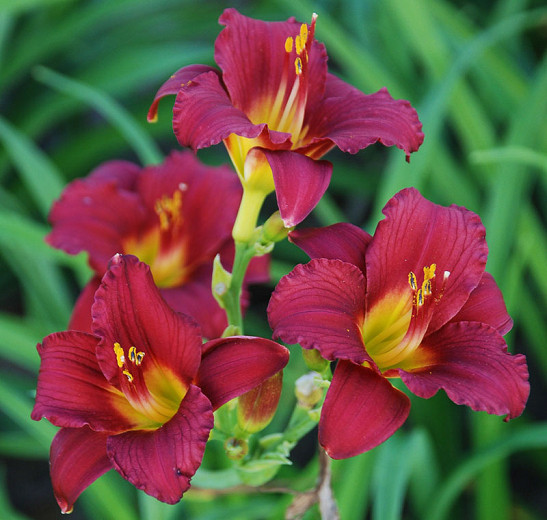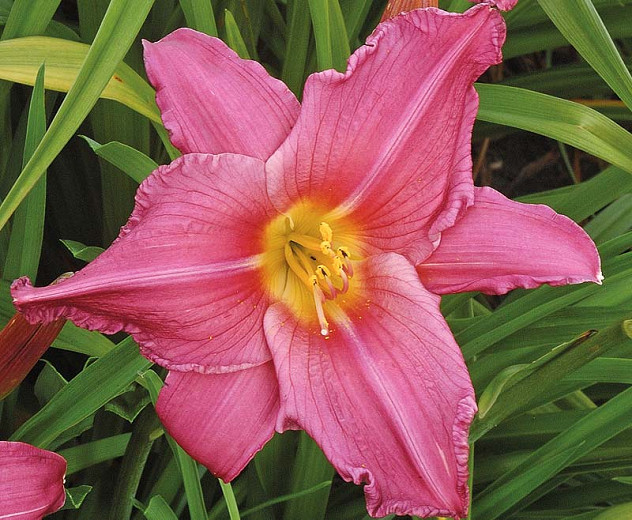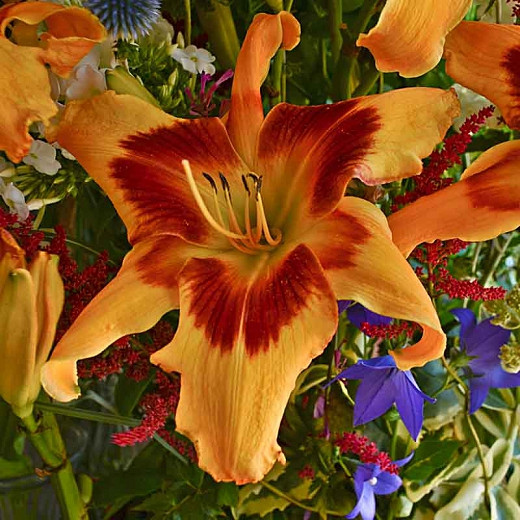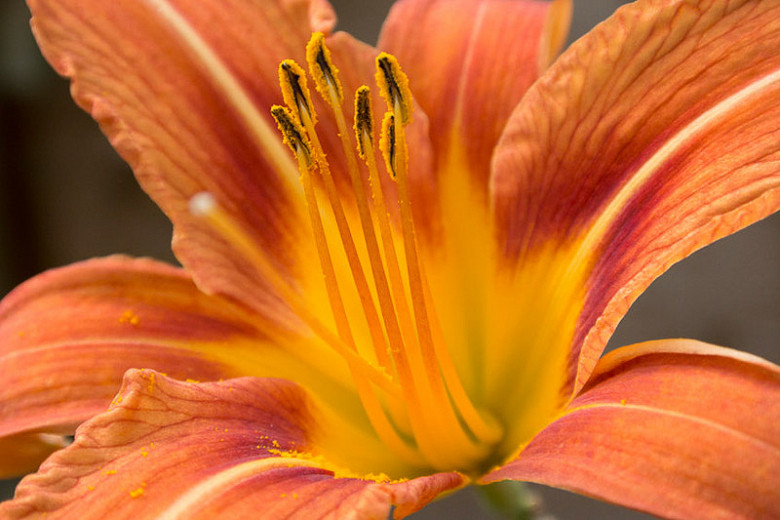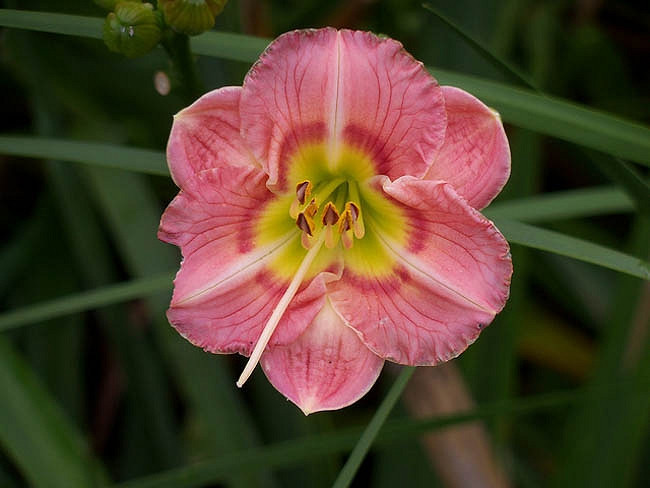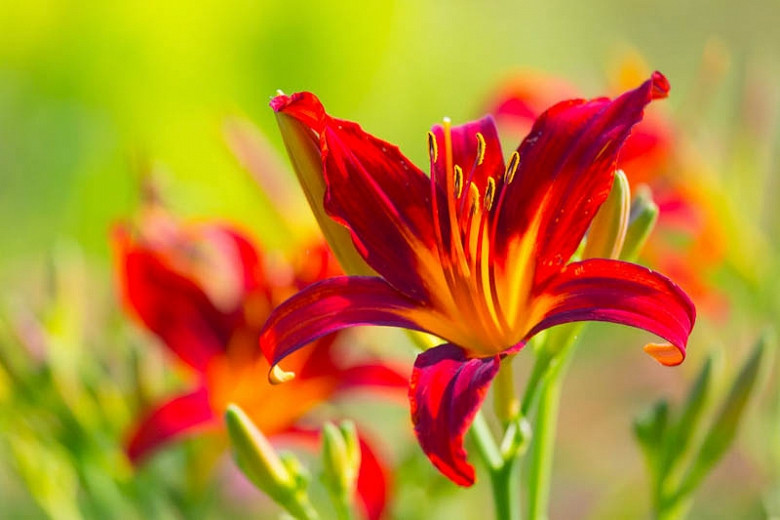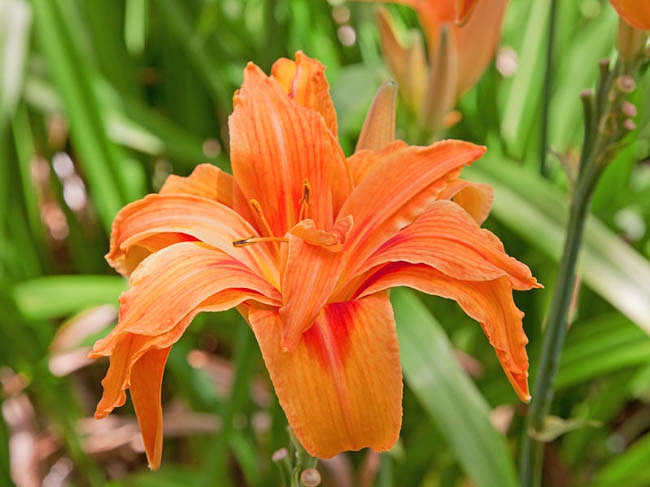Hemerocallis Ruby Stella (Reblooming Daylily)
Hemerocallis ‘Ruby Stella’ is a compact perennial boasting a profusion of slightly fragrant, vibrant ruby-red flowers, 3 in. across (7 cm), adorned with a small yellow throat. Blooming from early summer through the first frost without the need for deadheading, the attractive blossoms are held neatly above its compact mound of arching, sword-like leaves. An excellent reblooming daylily for mass plantings, erosion control, and perennial borders.
Hemerocallis 'Ruby Stella' is a compact perennial boasting a profusion of slightly fragrant, vibrant ruby-red flowers, 3 in. across (7 cm), adorned with a small yellow throat. Blooming from early summer through the first frost without the need for deadheading, the attractive blossoms are held neatly above its compact mound of arching, sword-like leaves. Each flower typically lasts no more than 24 hours (thus the common name 'Daylily'). Ruby Stella daylily is the sister of 'Stella D'Oro', which is widely recognized as an easy-to-grow and reliable reblooming daylily. Excellent daylily for mass plantings, erosion control, and perennial borders. This diploid daylily is dormant (deciduous).
- Grows up to 16-20 in. tall (40-50 cm) and 12-15 in. wide (30-37 cm).
- Thrives in full sun to part sun in average, moist, but well-drained soils. While it performs well in a wide range of soils, fertile loam is preferred. Tolerates heat and summer humidity, but thorough watering is required to ensure its foliage remains attractive.
- An ideal choice for beds and borders, cottage gardens, coastal gardens, rock gardens, as a ground cover, or in containers near the patio.
- Often called the 'perfect perennial' because of its numerous qualities: showy flowers, drought tolerance, heat stress immunity, ability to grow in most hardiness zones, and low care requirements, this daylily is a remarkable and stunning addition to the garden.
- Daylilies attract butterflies and hummingbirds but are toxic to cats. Rabbits tend to avoid daylilies.
- No serious pest or disease issues. Keep an eye out for mites, aphids, thrips, or daylily rust.
- The best time to plant Daylilies is in early fall or early spring.
- After flowering, remove spent blooms and seedpods to improve the appearance and encourage rebloom. When all the flowers on a scape are finished, cut off the scape close to ground level. Remove dead foliage from daylilies as they die back in the fall.
Requirements
| Hardiness | 3 – 9 |
|---|---|
| Heat Zones | 2 – 11 |
| Climate Zones | 1, 1A, 1B, 2, 2A, 2B, 3, 3A, 3B, 4, 5, 6, 7, 8, 9, 10, 11, 12, 13, 14, 15, 16, 17, 18, 19, 20, 21, 22, 23, 24, H1, H2 |
| Plant Type | Perennials |
| Plant Family | Hemerocallis – Daylilies |
| Exposure | Full Sun, Partial Sun |
| Season of Interest | Summer (Early,Mid,Late)Fall |
| Height | 1' – 2' (30cm – 60cm) |
| Spread | 1' – 2' (30cm – 60cm) |
| Spacing | 16″ – 20″ (40cm – 50cm) |
| Water Needs | Average |
| Maintenance | Low |
| Soil Type | Chalk, Clay, Loam, Sand |
| Soil pH | Acid, Alkaline, Neutral |
| Soil Drainage | Moist but Well-Drained |
| Characteristics | Fragrant, Showy |
| Tolerance | Drought, Rabbit |
| Attracts | Butterflies, Hummingbirds |
| Garden Uses | Beds and Borders, Ground Covers, Patio and Containers, Small Gardens |
| Garden Styles | Coastal Garden, Gravel and Rock Garden, Informal and Cottage, Traditional Garden |
